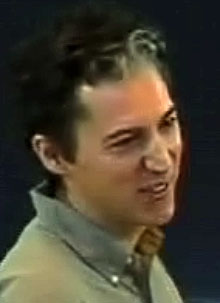|
|
| 10:30 | – | 10:55 | | Introductory talk — Nick Gill, Bristol |
|
This talk will be aimed at graduate students and researchers from other fields, and will be intended to provide some background for the main talks. |
|

|
|
Subspace arrangements and property T |
|
I will mainly talk about (my viewpoint at) a method for proving property T started by Dymara and Januszkiewicz. Their original motivation came from groups action on dimensional building, but the refined idea does not used anything more angles between subspaces in an finite dimensional
Euclidian space.
Parts of the talk are based on a work of M. Ershov and A. Jaikin. |
|
|
|
| 12:00 | – | 1:30 | | Lunch will be provided in the common room on the 4th floor of Howard House. |
|
|
|
| 1:30 | – | 1:55 | | Introductory talk — Will Dison, Bristol |
|
An introduction to Stallings' Ends Theorem. |
|
This talk will be aimed at graduate students and researchers from other fields, and will be intended to provide some background for the main talks. |
|

|
|
Topology of the boundary and splittings |
|
Stallings' Ends Theorem has been generalized to splittings
over 2–ended groups for hyperbolic groups by Bowditch using
the boundary of the group. Such splittings correspond to
local cut points of the boundary. One might hope to generalize this
further and give a topological characterization of splittings of hyperbolic
groups over any subgroups — at least generically.
We present a negative and a positive result related
to this question. (This is joint work with T. Delzant.)
|
|

|
|
The symmetric Torelli group |
|
We will describe an approach to a conjecture of Hain regarding
the generation of the subgroup of the mapping class group of a surface
which acts trivially on homology and which commutes with a fixed
hyperelliptic involution. In particular, we will describe a "symmetric
homology theory" for surfaces. (This is joint work with Dan Margalit.) |
|
|
|
| 4:10 | – | 4:40 | | Tea will be served in the common room on the 4th floor of Howard House. |
|

|
|
2-bridge knots and representations |
|
The (real) algebraic variety of SU(2)-representations of
a 2-bridge knot group has been much studied. Less so is
the equally interesting variety of SL(2,R)-representations.
I describe joint work with Dylan Bowden and Martin Bridson
arising from a question of Steve Boyer on representations
whose image is a hyperbolic triangle group. We explain
how such representations can arise and give an almost complete
classification. |
|